
In Part 1 I explained how I used a 7 Step Action Plan to conquer an irrational fear I had about riding “the scary corner” on my mountain bike. While everybody else seemed to effortlessly glide round the corner at speed and then over or around the craggy rocks as they exited on an uphill slope, I’d turn to hike-a-bike mode. I had previously ridden this corner, but somehow the fear escalated and made me feel very small and incapable.

The same 7 Step Action Plan that I used to conquer my fear on “the scary corner” can be applied to other scenarios in ordinary everyday life. Here’s how…..
First of all, what is it that’s got your heart pumping, your mind racing and your stomach churning? Maybe going to a meeting or party where you’re not sure if you know anyone? Going in a lift? Making a phone call that you’ve been dreading? Or something else? Let’s apply the 7 Step Action Plan to your situation:
- Walk it through
Think it through calmly. Maybe talk it through with someone. Stay rational, logical and reasonable.
- “Is anything missing?”
Are there skills or equipment that will help you be successful? For example, learn how to make small talk, have a dot point list in front of you, play music through your headphones.
- Make modifications – physical and / or psychological
Would it help to ask a friend to accompany you, place your chair near the exit, or use the phone on speaker so your hands are free?
- Identify your focus
Refocus your attention on what you want to happen, where you want to go, what you want to say, how you want to feel. The scary thoughts or feelings will keep popping up, but don’t give them the attention they are seeking. Keep refocusing.
- Practise your exit
Have an exit plan. If things get too much, what will you say, what will you do, where will you go? Knowing there’s a safe and valid way out brings a greater sense of ease and improves your rate of success.
- Make your entrance!
This is where you just do it. Every thing’s in place. You have a plan. Trust it. Trust yourself. What’s the worst that could happen now?
- Celebrate your growth
Your reward for stepping up to the challenge my be felt internally with a surge of relief or confidence. Or perhaps you’d like to reward yourself in another way.
Remember, everyone feels nervous about something at least some of the time. It’s  a normal mechanism designed to keep us safe, but if it’s keeping you small, then it’s time to do something about it. If your nervousness is impacting heavily on your functioning or contributing to ill-health, you can seek support from your GP to access counselling. Counselling is a bit like having a coach provide step-by-step guidelines and support as you learn new skills to achieve your goals.
a normal mechanism designed to keep us safe, but if it’s keeping you small, then it’s time to do something about it. If your nervousness is impacting heavily on your functioning or contributing to ill-health, you can seek support from your GP to access counselling. Counselling is a bit like having a coach provide step-by-step guidelines and support as you learn new skills to achieve your goals.

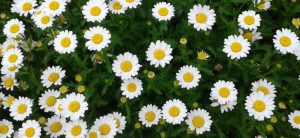
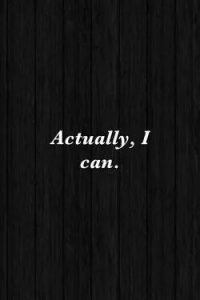 After much soul searching, I made the commitment to myself that I was going to conquer the fear that had irrationally built up in my mind. I really wanted to take charge of my fearful thoughts which seemed to be controlling my actions. It was as if my own thoughts were bullying me. The longer it went on, the worse it became. I knew that if I could get this sorted, I’d be able to transfer the skills and processes to other situations that make me nervous and better manage them as well.
After much soul searching, I made the commitment to myself that I was going to conquer the fear that had irrationally built up in my mind. I really wanted to take charge of my fearful thoughts which seemed to be controlling my actions. It was as if my own thoughts were bullying me. The longer it went on, the worse it became. I knew that if I could get this sorted, I’d be able to transfer the skills and processes to other situations that make me nervous and better manage them as well.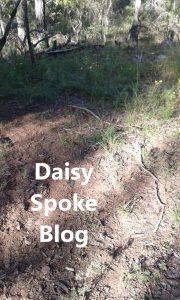
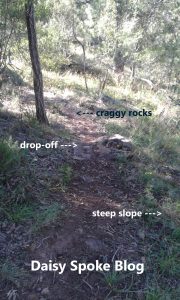

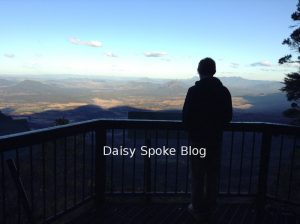 There is growing concern for obesity and other conditions related to sedentary behaviour including chronic illness and poor mental health. Apart from the obvious burden on the nation’s economy, the real burden of poor health is lived out and carried everyday by individuals, families and communities. As a community, I believe we need to creatively explore the possibilities when it comes to getting people active, and not expect individuals to slot into the pre-existing boxes for engaging with physical activities.
There is growing concern for obesity and other conditions related to sedentary behaviour including chronic illness and poor mental health. Apart from the obvious burden on the nation’s economy, the real burden of poor health is lived out and carried everyday by individuals, families and communities. As a community, I believe we need to creatively explore the possibilities when it comes to getting people active, and not expect individuals to slot into the pre-existing boxes for engaging with physical activities.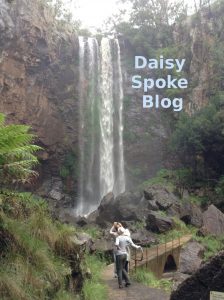 Rural and regional Australia has poorer health outcomes than its urban counterparts, so I’m really keen to make a constructive contribution to the health and wellbeing of my community on the southern Darling Downs, and to encourage women and girls to creatively construct systems and routines so they can enjoy being more active.
Rural and regional Australia has poorer health outcomes than its urban counterparts, so I’m really keen to make a constructive contribution to the health and wellbeing of my community on the southern Darling Downs, and to encourage women and girls to creatively construct systems and routines so they can enjoy being more active.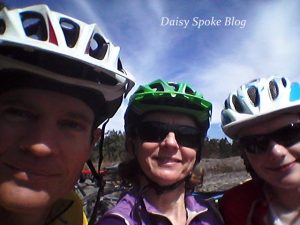 needs – not only women. Times they are a changin’ and the best time for change is now. I’d love to hear ideas from everyone regardless of gender:
needs – not only women. Times they are a changin’ and the best time for change is now. I’d love to hear ideas from everyone regardless of gender:

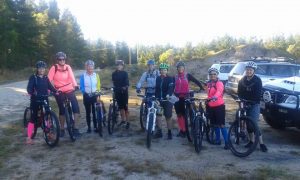 We were heralded by shrieks of awesomeness as some of the women ventured onto single track for the first time; laughs of newly formed friendships as we warmed up and peeled off the layers; and words of encouragement and advice as the newbies mixed it with the more experienced riders in the bunch. We climbed the hilly and rocky terrain of the forest, notching up the miles and the skill level, and enjoyed the relative ease of the gentle downhill sections. We marvelled at the winter weather which provided perfect conditions for the ride despite the chilly start! The bright blue sky, the cheeky breeze, the green forest, the red toadstools, the black cockatoos, the lively kangaroos and the stunning view from “the little big rock” were all there to show off what an amazing world we share (and how far we’d ridden throughout the morning!)
We were heralded by shrieks of awesomeness as some of the women ventured onto single track for the first time; laughs of newly formed friendships as we warmed up and peeled off the layers; and words of encouragement and advice as the newbies mixed it with the more experienced riders in the bunch. We climbed the hilly and rocky terrain of the forest, notching up the miles and the skill level, and enjoyed the relative ease of the gentle downhill sections. We marvelled at the winter weather which provided perfect conditions for the ride despite the chilly start! The bright blue sky, the cheeky breeze, the green forest, the red toadstools, the black cockatoos, the lively kangaroos and the stunning view from “the little big rock” were all there to show off what an amazing world we share (and how far we’d ridden throughout the morning!)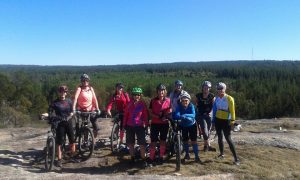
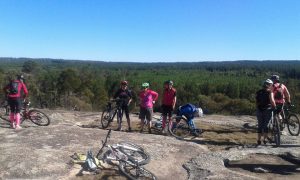
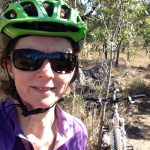 ….. or contact me – your women’s ride co-ordinator 🙂
….. or contact me – your women’s ride co-ordinator 🙂 So, what are these foundation stones of wellness? There are four main foundation stones that I work on with my clients as well as in my own personal life. Each of the stones support each other – they are interlinked – and they are a fabulous place to start building or renovating wellness at any time! The foundations are based on solid evidence that is routinely used in the mental health sector.
So, what are these foundation stones of wellness? There are four main foundation stones that I work on with my clients as well as in my own personal life. Each of the stones support each other – they are interlinked – and they are a fabulous place to start building or renovating wellness at any time! The foundations are based on solid evidence that is routinely used in the mental health sector. Basically, people are designed to move … a lot. When we don’t move enough, we are at greater risk of switching into a depressed or anxious state. It’s simple biology. Get moving, get active, get off the sofa, and move as much as you can and often as you can. For most of us it’s recommended to aim for about an hour of moderate intensity exercise or activity each day, and limit our screen time to 2 hours per day. The combined mental and physical health benefits of exercise / activity cannot be replaced by any medication. If you are in pain, or have limited movement, injuries, or chronic disease, the best idea is to do what you can. Remember always check with your doctor or health professional if you have any concerns about your health, exercise, and resting needs.
Basically, people are designed to move … a lot. When we don’t move enough, we are at greater risk of switching into a depressed or anxious state. It’s simple biology. Get moving, get active, get off the sofa, and move as much as you can and often as you can. For most of us it’s recommended to aim for about an hour of moderate intensity exercise or activity each day, and limit our screen time to 2 hours per day. The combined mental and physical health benefits of exercise / activity cannot be replaced by any medication. If you are in pain, or have limited movement, injuries, or chronic disease, the best idea is to do what you can. Remember always check with your doctor or health professional if you have any concerns about your health, exercise, and resting needs. 2. Sleep
2. Sleep  3. Nutrition
3. Nutrition  4. Mind
4. Mind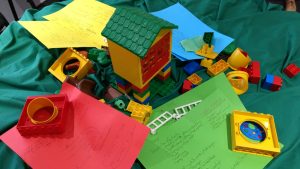

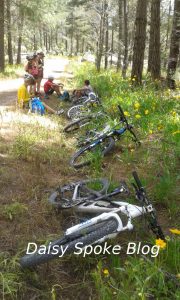



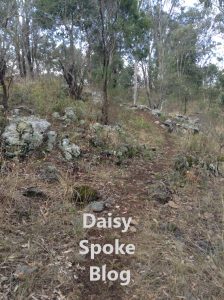
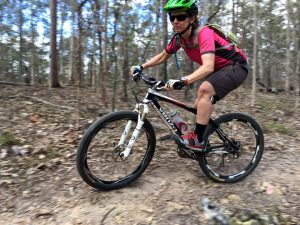
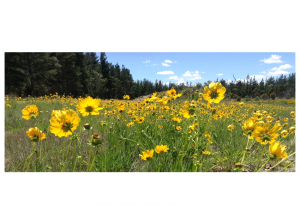 I’ve continued to ride my MTB several times a week for at least an hour since initiating My Great MTB Experiment. Weekend group and family rides have been longer, usually 3 hours or so.
I’ve continued to ride my MTB several times a week for at least an hour since initiating My Great MTB Experiment. Weekend group and family rides have been longer, usually 3 hours or so.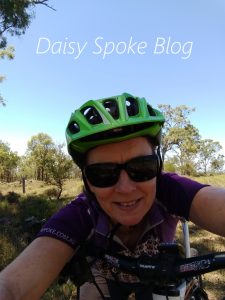 And, so, HOW AM I DOING NOW after quite a few weeks of persisting with regular practice? Well, thanks for asking! Yes! I am enjoying myself much more than I thought I would after finding myself in a veritable mental rut as far as summer riding goes. Whilst the summer temperatures and associated challenges continued, they’ve been less problematic than before. Fewer flies, hot temperatures rather than searing temperatures, and riding on open tracks rather than overgrown ones have all helped me to persist with regular practice. All this in spite of the various injuries from falls off my bike! Riding is feeling smoother and I’ve even been getting up a bit earlier (occasionally) to squeeze the rides into my day.
And, so, HOW AM I DOING NOW after quite a few weeks of persisting with regular practice? Well, thanks for asking! Yes! I am enjoying myself much more than I thought I would after finding myself in a veritable mental rut as far as summer riding goes. Whilst the summer temperatures and associated challenges continued, they’ve been less problematic than before. Fewer flies, hot temperatures rather than searing temperatures, and riding on open tracks rather than overgrown ones have all helped me to persist with regular practice. All this in spite of the various injuries from falls off my bike! Riding is feeling smoother and I’ve even been getting up a bit earlier (occasionally) to squeeze the rides into my day.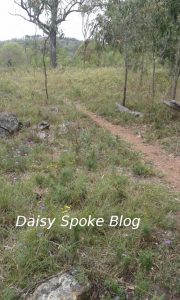 and scrapes and a strained muscle in my chest. Nothing too bad really if you ignore the fact that I was aiming to improve my confidence through increasing my time on the bike!
and scrapes and a strained muscle in my chest. Nothing too bad really if you ignore the fact that I was aiming to improve my confidence through increasing my time on the bike!